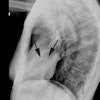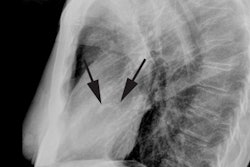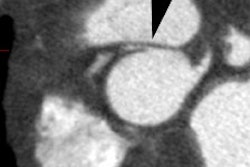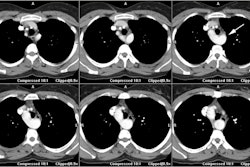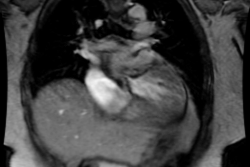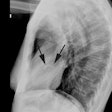J Am Coll Cardiol 2001 Jul;38(1):105-10
Screening patients with chest pain in the emergency department using electron
beam tomography: a follow-up study.
Georgiou D, Budoff MJ, Kaufer E, Kennedy JM, Lu B, Brundage BH.
OBJECTIVES: The high sensitivity of electron beam tomography (EBT) in the
detection of coronary artery calcium (CAC) and obstructive coronary artery
disease prompted us to investigate the association between CAC detection and
future cardiac events in patients with acute chest pain syndromes requiring
hospitalization. BACKGROUND: Three studies have documented that EBT is a rapid
and efficient screening tool for patients admitted to the emergency department
(ED) with chest pain, but there is a paucity of long-term follow-up data on
these chest pain patients. METHODS: We conducted a prospective observational
study of 192 patients admitted to the ED of a large tertiary care hospital for
chest pain syndromes. Upon admission, patients underwent EBT scanning in
addition to the usual care for chest pain syndromes. During the 17-month
enrollment period, 221 patients were scanned (54% men with a mean age of 53 +/-
9 years). Average follow-up was 50 +/- 10 months using chart review. RESULTS:
Fifty-eight patients had coronary events confirmed by a blinded medical record
review. The presence of CAC (a total calcium score >0) and increasing score
quartiles were strongly related to the occurrence of hard cardiac events
including myocardial infarction and death (p < 0.001) and all cardiovascular
events (p < 0.001). Stratification by age- and gender-matching further
increased the prognostic ability of EBT (for scores above vs. below the age- and
gender-matched CAC scores; odds ratio: 13.1, 95% confidence intervals: 5.62,
35.9). CONCLUSIONS: These data support previous reports demonstrating that the
presence of CAC in a symptomatic cohort is a strong predictor of future cardiac
events. This study supports the use of EBT in a symptomatic cohort with prompt
discharge of those patients with negative scans. Furthermore, the absence of CAC
is associated with a very low risk of future cardiac risk events in this
population over the subsequent seven years (annual event rate <1%).
